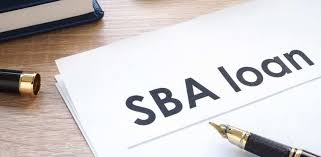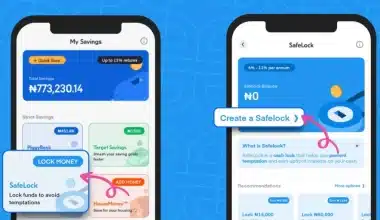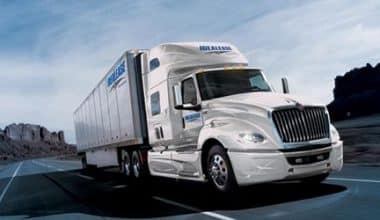The United States Small Business Administration (SBA) guarantees the repayment of a loan made by a financial institution in the form of an SBA loan. Because of this backing, the lending institution can offer business loans to borrowers with better terms or more flexible underwriting requirements than those for traditional loans. Because they are backed by the government, Small Business Administration loans encourage banks to lend money to businesses that they otherwise might not be able to do business with. If you own a small business and are unable to meet the requirements for a conventional business loan, an SBA loan might be the best alternative for you.
What Is a Sba Loan?
A loan from the Small Business Administration (SBA) is a type of financing that is made to fit the needs of smaller businesses. It can cover start-up costs, operating capital needs, business expansions, and equipment purchases. Private lenders provide this financing, but the US government guarantees it.
Each SBA loan program is unique and has its own set of requirements and eligibility standards. The terms of repayment typically include restrictions on the money’s intended usage. Since the program’s specifics are often shifting, it may be easier for you if your banker has experience with SBA loans.
How Do Sba Loans Work?
A loan from the Small Business Administration must be requested through a bank or credit union. After applying to the SBA for a loan guarantee, the lender receives the money from the government if the borrower defaults on the loan.
Also, if your company can’t make payments, you and your personal assets will have to. When both the government and the owner of a small business sign personal guarantees, it’s easier for the business to get money.
Your lender will decide what to do next if you have been eligible for a Small Business Administration loan. Direct repayment to the lender occurs on a regular basis (often monthly).
Types of SBA Loan
Different varieties are provided by two distinct groups of loan providers. The SBA makes it easier to get loans by giving some financial institutions the power to make the final decision. Interested lenders must submit loan applications to the SBA for approval. SBA fees typically range from 2% to 4% of the amount they loan. Here are the types of SBA loans:
#1. 504 Loans
Borrowers use these types of loans to pay for the purchase of property and machinery, the building of new facilities, or the improvement of existing ones. Both the private lender (up to 50%) and the Certified Development Company (CDC), a local partner (up to 40%), make loans to make this possible. The application fee is 10% of the total project cost. The Small Business Administration backs the CDC part. Together, the SBA specialist at the bank and the CDC make sure that the borrower’s application goes smoothly.
#2. Economic Injury Disaster Loans
If a crisis or tragedy has hurt a company financially, it can ask EIDL for help to get back on its feet. They can help with expenses that go outside the scope of insurance or FEMA relief grants. They can also pay for business costs that would have been incurred anyway if the disaster hadn’t happened.
#3. 7(a) loans
Borrowers can use 7(a) loans for a wide range of approved purposes, including business expansion and renovation, new construction, the purchase of land or buildings, the purchase of equipment and fixtures, working capital, a seasonal line of credit, inventory, and starting a new business.
#4. Express
The Small Business Administration’s (SBA) Loan Guarantee Program backs SBA Express loans. Even though the “express” loan is the same as the SBA 7(a) loan in terms of maximum loan size ($5 million) and percentage of loan guarantee (85%), it is approved in less than 36 hours, which is a lot faster.
Furthermore, if the application is successful, the owner of the business will have access to the money in less than a month. If you’ve ever dealt with the SBA 7(a) loan procedure, you know how tedious and time-consuming it can be. But it will be harder for a borrower who isn’t ready to get a loan, no matter what kind of loan program it is.
What Is the Easiest Sba Loan to Get Approved For?
Microloans from the Small Business Administration (SBA), which are among the easiest SBA loans to be qualified for, can range in size from $500 to $50,000. Microloans are a great option for business owners with less-than-perfect credit who might have trouble getting other types of SBA loans. Many people who get microloans can’t get the money they need to start their own businesses because they are women, members of minority groups, make less money, or face other problems.
What Banks Work With the Sba?
If your business has been operating for over a year and you don’t have an immediate need for funds, a bank is your best bet for obtaining a small business loan. In spite of having good credit, it can take months to get approved.
Data from the Biz2Credit Small Business Lending Index shows that only approximately 15% of businesses that apply for loans from banks end up getting approved. That’s why it’s crucial to find a bank that not only provides access to the necessary business loan but also has the financial resources to back up that loan. Here are the banks that work with the SBA.
#1. PNC
If you own a more established company, PNC may be able to help you with a business loan. To qualify, you’ll need to show that your company has been operational for at least three years, which is a longer period of time than some banks may require.
While PNC is on the list of banks that are approved to provide Small Business Administration loans, it is not as active as some of the others. Comparatively, Wells Fargo and U.S. Bank have approved over 1,800 SBA 7(a) loans apiece as of September 2022, while PNC has granted just over 400.
#2. Bank of America
According to S&P Global Market Intelligence, as of March 2022, Bank of America had more commercial and industrial loans than any other bank, by a margin of over $122 billion.
If you’re looking for a business loan with great perks, consider applying for one at Bank of America. If you meet the account’s requirements, you can get a lower interest rate, free wire transfers, and other perks. The 25% reduction in loan administration or origination fees that Bank of America provides to veterans and active-duty service members may make it a good option for them as well.
#3. Wells Fargo
Wells Fargo offers small business administration loans and other lines of credit, but its lending maximums are lower than those of some banks; if you have collateral and require more than $500,000 in finance, you may want to go elsewhere.
For small business loans, Wells Fargo is a major player. By September 2022, it was the largest national bank for SBA 7(a) loans with $377 million authorized.
#4. Citi
The Citibank Small Business Credit Card might be more well-known among business owners. But the bank also gives loans to businesses, though it has a smaller selection than other places. While this straightforwardness may appeal to you, it also means you’ll have to look elsewhere for the loan you need if Citi doesn’t offer it.
Also, two business lines of credit are available from $10,000 to $5 million through Citibank. Both lines of credit have variable interest rates and need a personal guarantee.
#5. U.S Bank
In comparison to rivals like Bank of America and Wells Fargo, U.S. Bank maintains a smaller network of physical branches. In contrast, if there is a U.S. After a year of banking with the same branch, a new company has a better chance of being chosen for a variety of services and products.
If you need an SBA loan, U.S. Bank is another viable option. Nearly 1,800 7(a) loan applications had been granted by September 2022, the end of the fiscal year 2022. If your company is less than a year old in the US, a bank may provide you with an SBA loan.
Procedures for requesting a Small Business Administration Loan
Loans from the Small Business Administration (SBA) could be the answer to your expansion difficulties. Private financial institutions offer SBA-backed loans, but the SBA backs the loan and adds extra protections for both the borrower and the lender.
As there are many people and organizations (including the government) engaged in these massive deals, the process of applying for an SBA loan can be convoluted. You’ll have to search for a lender who is willing to work with the Small Business Administration, then go through a lengthy application process that could last several months. However, the loans are a lifeline for businesses and come with reasonable rates and terms.
#1. Find a Lender
When it comes to providing SBA loans, only approved lenders are allowed to do so. If you trust your bank or credit union with your business, investigate SBA loan options. In addition, the free online SBA Lender Match service can put you in touch with small, reputable lenders and the Community Development Financial Institutions (CDFI) Program, which offers finance to businesses in low-income and underserved areas.
Your local SBA district office can put you in touch with local SBA lenders. You can now apply for an SBA loan online through a number of different internet lenders.
#2. Decide on a Loan Type
SBA loans, in general, refer to 7(a) loans because that is the SBA’s main loan program. They serve as a versatile source of operating capital, among other things.
504 loans provide small firms with access to long-term financing for the purchase of fixed assets that can be put toward expansion and improvement. Certified Development Companies (CDCs) are nonprofit organizations that issue these loans.
Small businesses and non-profits can also ask the SBA for microloans of up to $50,000. The SBA is currently offering Economic Injury Disaster Loans (EIDLs) and Paycheck Protection Program (PPP) loans to businesses that are having trouble making ends meet because of the COVID-19 outbreak.
#3. Get your documents together
Depending on the program, your lender may have specific requirements that you must meet before they will even look at your application. The following paperwork is often needed for SBA 7(a) loans, but your lender will tell you the exact requirements.
If you have questions regarding the application process or requirements, ask your SBA loan officer.
#4. Submit your SBA loan application package
Having a mentor or business coach look over your loan application once you’ve gathered all this material can be helpful. They may be able to fill in gaps in your knowledge or strengthen areas where you are weak.
Next, you should send your completed application to the prospective lender. After looking everything through, they will decide whether or not to provide the loan. Sending it on to the SBA is a necessary step if they want the SBA to back the loan.
The SBA will then look at your application, check your credit, and decide whether or not to back the loan. This stage usually takes between five and ten days for SBA 7(a) loans. Quick loans are available in as little as 36 hours. Also, read SBA LOAN PROCESS: What It Is and How It Works.
You will work with your lender to finish the underwriting process, which may include giving collateral and personal guarantees.
What Credit Score Do You Need for a Sba Loan?
The minimum credit score required for SBA loans and term loans is often somewhere around 680. If you’re on the lower end of this spectrum, you’ll probably need very strong business credentials to qualify, such as several years in business or large annual sales. If you don’t have either of those things, you won’t be able to qualify.
How Quickly Can I Get a Sba Loan?
The SBA approval process might take 30 to 90 days from loan application to funding. However, this time limit can vary depending on the lender as well as the type of loan.
Is Sba Loan Hard to Get?
An SBA loan is not difficult to obtain, contrary to popular belief. Approval is extremely simple and more common than you may imagine, and most firms can apply. SBA 504 loans assist small firms buy fixed assets like real estate and machinery.
How Do I Know if I’m Approved for Sba Loan?
In the event that your loan is approved, the SBA will send you an email containing information regarding the loan. Call the SBA if you want to know how your application is going but haven’t heard from them yet. Your loan application status may be available online or by calling your loan officer, depending on the bank.
Pros and Cons of SBA Loan
Small Business Administration (SBA) loans can be approved based on how much money the company is expected to make in the future. This means that potential franchisees can get money to start up or grow, depending on how much money they expect to make. Here are the pros and cons of an SBA loan.
Advantages
#1. Lower Rates
The SBA will not only cover a large portion of your loan but also cap the interest rate you pay. Depending on conditions, the SBA may set its rate at 5.25%–7.25% if the federal prime rate is 3.25%.
SBA loan rates are often cheaper than those of other lending options from traditional and alternative lenders. The actual interest rate is connected to the federal prime rate. Whether you get an SBA loan or a non-loan form of funding from an alternative lender like a merchant cash advance, the total cost of your funding will depend on how good your credit is and what your financial history is like.
Varied SBA loan programs have different interest rates since they have varying approval requirements. There is the option of either a fixed or variable interest rate, but the actual rate you pay will be determined through a discussion between you and the lender and will be based on factors like your credit score and the stability of your personal and/or company finances.
#2. Cost-Effective Repayment Options
The length of an SBA loan’s repayment term is negotiable with the lender and usually depends on the loan’s intended use, although in general, SBA loans have longer repayment periods than other funding sources.
For property purchases, for instance, SBA loans have a 25-year repayment period, while other loans have 7–10 years. Since the SBA guarantees that the loan will be paid back over a longer period of time, the monthly payments on an SBA loan may be lower than those of other types of loans, making it easier for your business to make money.
Also, most SBA loans are fully amortized, so business owners don’t have to worry about making large, unexpected payments at the end of their loan term. The terms of your loan may include options for refinancing, smaller down payments, and flexible payment plans.
#3. Higher Loan Amounts
Depending on the particular requirements of your company, the SBA can provide a loan of up to $5 million. There is also the option of taking out a loan that is significantly less than $50,000, known as a microloan.
#4. Easy to Qualify
Businesses that may not qualify for a conventional loan due to factors such as a poor credit rating might still receive money thanks to the Small Business Administration’s (SBA) ability to provide some additional security to the lender.
Disadvantages
The benefits of lower interest rates and longer terms are appealing, but these benefits come at the cost of strict underwriting requirements, a lot of paperwork, long application times, and other problems.
#1. Lengthy Waiting Periods for Applications
After you have submitted all required documents, it may take a lender several weeks or months to process your loan application. The approval process for a non-preferred lender is longer because it requires both the lender’s and the SBA’s approval. This is a major issue for firms that need cash rapidly to cover an extra fee or grow.
#2. Strict Underwriting Requirements
Business owners need to know that the requirements for an SBA loan are some of the toughest out there. The Small Corporate Administration usually needs a credit score of 680 or above, a solid personal and business financial history, and at least two years in business before granting a loan.
Your lender, not the SBA, makes the final decision about whether or not you will get funding. In addition to these and other SBA minimum standards, your lending partner may have additional criteria for approval, and you may need to apply for SBA funding with multiple financial institutions before you get approved. Each potential lender has its own application and approval procedures.
Many small businesses are stumped because they do not meet the lender’s or the SBA’s stringent funding standards, and they are left wondering how to secure the capital they need to thrive and expand. Alternative lenders, which are not banks, allow businesses to continue to get the money they require. Discover the benefits and drawbacks of using non-traditional lenders.
#3. There Could Be a Requirement for a Down Payment or a Personal Guarantee
A down payment of 10–20% is often required for an SBA loan, though the exact amount can vary based on the purpose of the loan and your personal financial situation. An increased initial payment is generally required for those with poorer credit scores.
For small businesses with a spotty financial history or that have been operating under COVID-19 restrictions, even though the SBA normally wants a smaller down payment than other lenders, it can be difficult to gather enough funds. When working with alternative lenders such as Greenbox Capital®, no initial capital is required.
#4. Extensive Paperwork
Small business entrepreneurs seeking SBA loans must fill out a lengthy application and provide several supporting documents. Some of these documents are about the applicant’s personal finances, while others are about the company’s finances. In addition to the detailed regular application, you may also be asked to provide:
- Reports of Profit and Loss
- Calculating a Profit and Loss Statement
- Expenditure and Income Forecasts
A comprehensive strategy for how you intend to use the loan money may be required. Many business owners, especially solopreneurs, struggle to find time to gather documents.
Conclusion
An SBA loan can be a flexible and economical way to receive the finance you need for a variety of business-related endeavors, such as improving cash flow, purchasing or expanding a firm, purchasing a commercial property, or consolidating corporate debt. These aims include: Working with a lender who has done SBA loans before will make it easier.
What disqualifies you from getting an SBA loan?
Ineligible firms include those whose owners are currently on parole, involved in illicit activities, loan packing, speculating, and multi-sales distribution.
How long does the SBA take to approve or deny a request?
The standard SBA loan approval time is between two and three months with most lenders. Financing in as little as 30 days is possible with some SBA lenders.
Do you have to pay back an SBA loan?
Yes, you have to pay back an SBA loan. However, the loan terms — the period you have to pay back your lender — are typically longer than with other types of company loans.
Similar Posts
- HOW TO GET SBA LOAN APPROVED: Best Easy Guide (+ Free Tips).
- SMALL BUSINESS LOAN: How to Get a Small Business Loan
- LOANS FOR COMMERCIAL PROPERTY: Types & How To Obtain One
- BUSINESS LOANS BAD CREDIT: Definition and How to Get It
Reference






